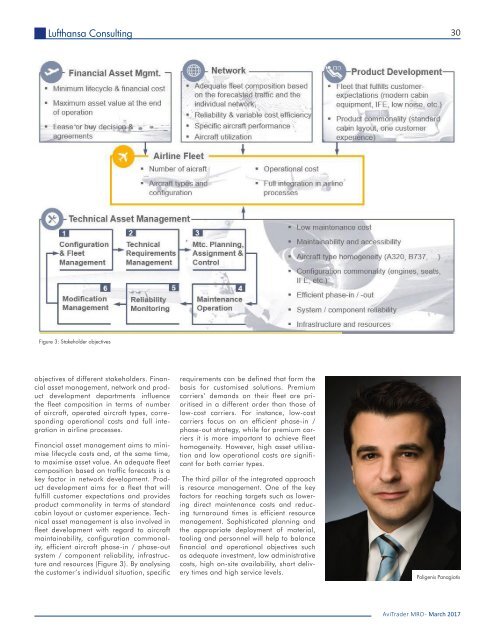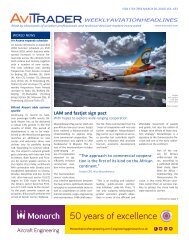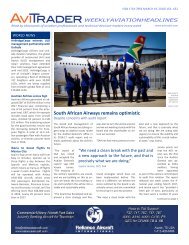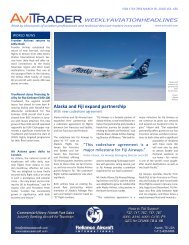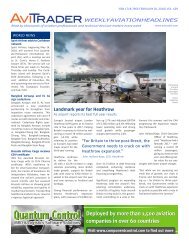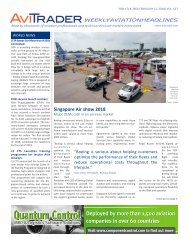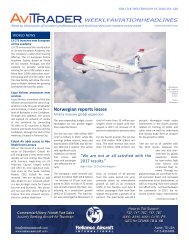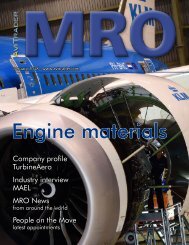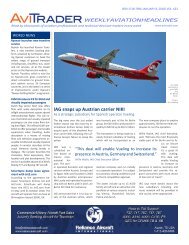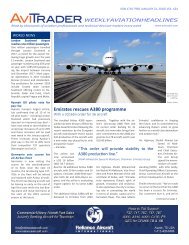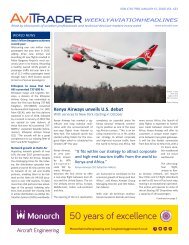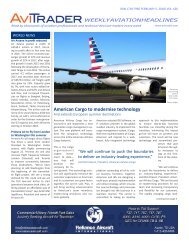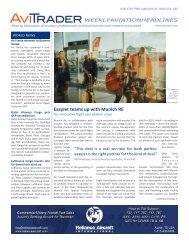AviTrader MRO Magazine 2017-03
AviTrader MRO Magazine 2017-03
AviTrader MRO Magazine 2017-03
You also want an ePaper? Increase the reach of your titles
YUMPU automatically turns print PDFs into web optimized ePapers that Google loves.
Lufthansa Consulting<br />
30<br />
Figure 3: Stakeholder objectives<br />
objectives of different stakeholders. Financial<br />
asset management, network and product<br />
development departments influence<br />
the fleet composition in terms of number<br />
of aircraft, operated aircraft types, corresponding<br />
operational costs and full integration<br />
in airline processes.<br />
Financial asset management aims to minimise<br />
lifecycle costs and, at the same time,<br />
to maximise asset value. An adequate fleet<br />
composition based on traffic forecasts is a<br />
key factor in network development. Product<br />
development aims for a fleet that will<br />
fulfill customer expectations and provides<br />
product commonality in terms of standard<br />
cabin layout or customer experience. Technical<br />
asset management is also involved in<br />
fleet development with regard to aircraft<br />
maintainability, configuration commonality,<br />
efficient aircraft phase-in / phase-out<br />
system / component reliability, infrastructure<br />
and resources (Figure 3). By analysing<br />
the customer’s individual situation, specific<br />
requirements can be defined that form the<br />
basis for customised solutions. Premium<br />
carriers’ demands on their fleet are prioritised<br />
in a different order than those of<br />
low-cost carriers. For instance, low-cost<br />
carriers focus on an efficient phase-in /<br />
phase-out strategy, while for premium carriers<br />
it is more important to achieve fleet<br />
homogeneity. However, high asset utilisation<br />
and low operational costs are significant<br />
for both carrier types.<br />
The third pillar of the integrated approach<br />
is resource management. One of the key<br />
factors for reaching targets such as lowering<br />
direct maintenance costs and reducing<br />
turnaround times is efficient resource<br />
management. Sophisticated planning and<br />
the appropriate deployment of material,<br />
tooling and personnel will help to balance<br />
financial and operational objectives such<br />
as adequate investment, low administrative<br />
costs, high on-site availability, short delivery<br />
times and high service levels.<br />
Poligenis Panagiotis<br />
<strong>AviTrader</strong> <strong>MRO</strong> - March <strong>2017</strong>


